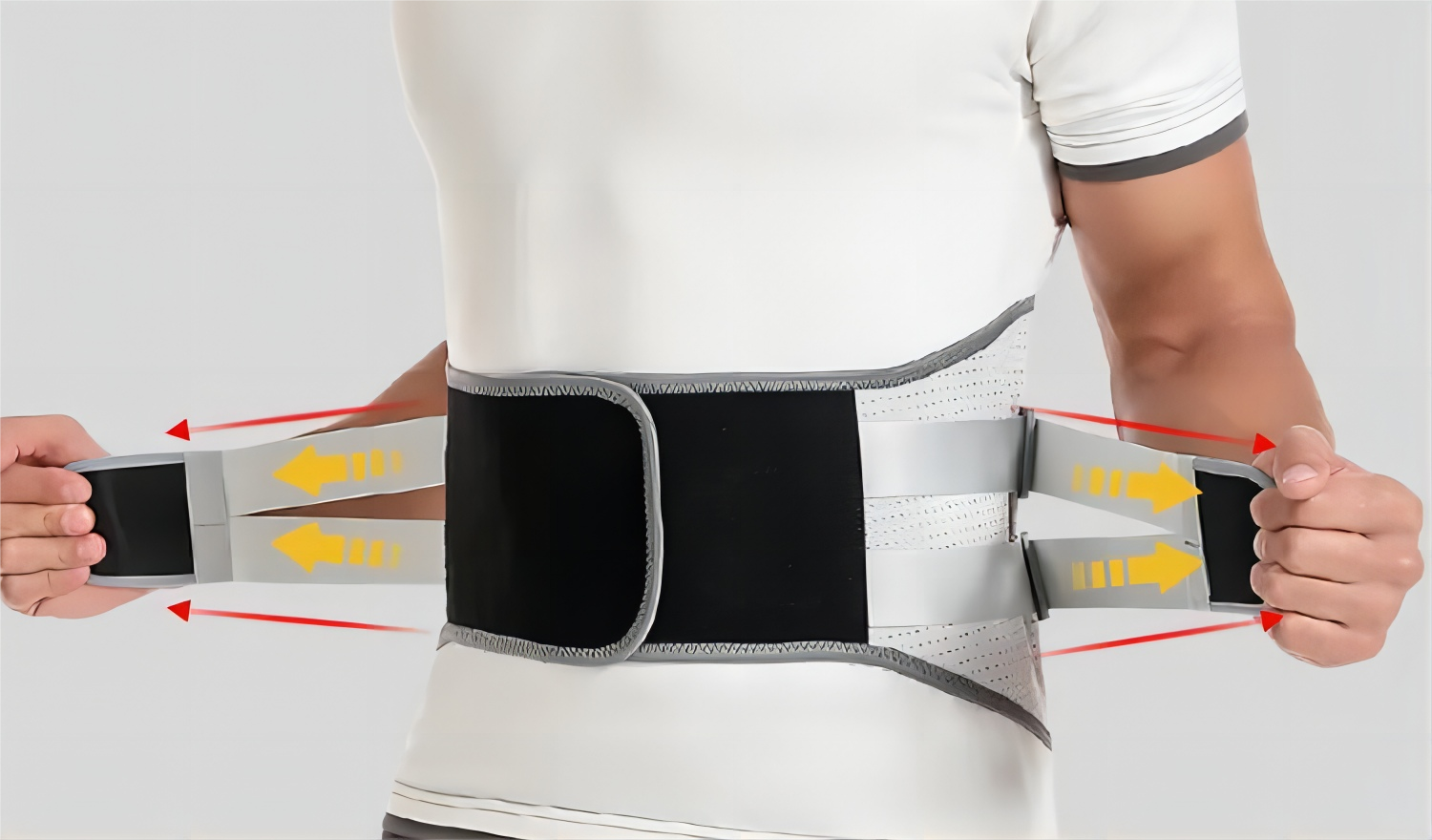john@lee-mat.com
+86-13510662576

GET QUOTE
When to Consider Using Waist Support for Back Pain Relief?
Understanding Waist Supports
Definition and Types of Waist Supports
Waist supports come in various forms, including waist support belts and waist braces for back pain.
These supports are designed to target the waist region, providing stability and compression to alleviate discomfort.
Waist support belts typically wrap around the waist, while waist braces offer more rigid support with straps or panels.
On the other hand, waist supports provide a combination of compression and flexibility for comfort during wear.
Explanation of How Waist Supports Work to Alleviate Back Pain
The primary function of waist supports is to provide additional support to the lower back, reducing strain on the muscles and ligaments.
By stabilizing the waist spine, these supports help distribute pressure more evenly, relieving pain and discomfort.
Signs That You May Need a Waist Support
Persistent Lower Back Pain During Daily Activities
If you find yourself experiencing persistent lower back pain during daily activities such as sitting, standing, or walking, it may be a sign that you could benefit from using a waist support.
Whether it's discomfort from poor posture or strain from repetitive movements, a waist support belt for back pain or a waist brace for back pain can provide the extra support needed to alleviate discomfort and promote proper spinal alignment.
History of Back Injuries or Surgeries
Individuals with a history of back injuries or surgeries are often at a higher risk of experiencing recurrent pain and discomfort.
In such cases, using a waist support, such as a waist support belt for back pain or a waist brace for back pain, can help stabilize the spine and reduce strain on injured or weakened areas.
Engaging in Activities Involving Heavy Lifting or Prolonged Sitting
Jobs or hobbies that involve heavy lifting or prolonged sitting can put significant strain on the lower back, leading to discomfort and fatigue.
Whether you're a warehouse worker, office employee, or avid gamer, wearing a waist support can help alleviate pressure on the spine and prevent back pain.
Pregnancy-Related Back Discomfort
Pregnancy often brings about various physical changes, including changes in posture and increased strain on the lower back.
Many expectant mothers experience back discomfort, particularly during the later stages of pregnancy.
Using a waist support, such as a pregnancy support belt, can help alleviate pressure on the spine and provide relief from pregnancy-related back pain.
Scenarios Where Waist Supports Are Beneficial
Workplace Ergonomics
Whether you're working at a desk or engaging in manual labor, maintaining proper posture is essential for spinal health.
Waist supports, such as waist support belts for back pain or waist braces for back pain, can help alleviate strain on the lower back during prolonged periods of sitting or standing.
Long-Distance Driving
Long hours behind the wheel can take a toll on your lower back, leading to discomfort and fatigue.
Waist supports can provide much-needed relief during extended periods of driving.
By promoting proper spinal alignment and reducing pressure on the waist region, these supports help alleviate strain and discomfort, allowing you to maintain focus and comfort throughout your journey.
Pregnancy Support
Expectant mothers often experience back pain and discomfort, particularly during the later stages of pregnancy.
Waist supports, such as pregnancy support belts, are specially designed to accommodate the growing belly while providing support to the lower back.
By relieving pressure on the spine and promoting proper posture, allowing expectant mothers to stay active and comfortable throughout their pregnancy.
Post-Surgery Recovery
After undergoing surgical procedures, it's essential to take measures to promote healing and reduce strain on the back.
Whether it's a waist support belt for back pain or a waist brace for back pain, these supports assist in reducing strain on the surgical site and promoting proper alignment, facilitating the healing process and ensuring a smoother recovery journey.
Choosing the Right Waist Support
Factors to Consider When Selecting a Waist Support
When choosing a waist support, several factors come into play, including the type, size, and material.
And, ensure that the support fits comfortably and provides adequate stability to the waist region.
Pay attention to the material of the support, opting for breathable and durable materials that offer both comfort and support.
Importance of Consulting with Healthcare Professionals
Before purchasing a waist support, it's essential to consult with healthcare professionals for personalized recommendations.
A physiotherapist or chiropractor can assess your individual needs and provide guidance on the most suitable type of support for your condition.
They can also offer valuable advice on proper fitting and usage, ensuring that you get the most out of your waist support and minimize the risk of further injury.
Tips for Using Waist Supports Effectively
Proper Fitting and Adjustment Techniques
Ensuring that your waist support fits properly is crucial for its effectiveness.
Take the time to adjust the support to your body's contours, ensuring a snug yet comfortable fit.
Avoid overtightening or loosening the support, as this can affect its ability to provide adequate stability to the waist region.
Experiment with different adjustments until you find the perfect fit that offers both support and comfort.
Regular Maintenance and Cleaning
To ensure the durability and hygiene of your waist support, it's important to practice regular maintenance and cleaning.
Follow the manufacturer's guidelines for cleaning and care, using mild soap and water to clean the support regularly.
Avoid exposing the support to excessive heat or moisture, as this can damage the materials and affect its performance.
By keeping your waist support clean and well-maintained, you can extend its lifespan and ensure optimal support for your lower back.
Conclusion
In today's fast-paced world, it's easy to neglect spinal health amidst the hustle and bustle of daily life.
However, taking proactive steps towards spinal health is essential for overall well-being and quality of life.
By incorporating waist supports into your routine, you can prevent and manage back pain, allowing you to live a more comfortable and fulfilling life.
Remember that your spinal health is in your hands, and by prioritizing it, you can enjoy better health and vitality for years to come.




